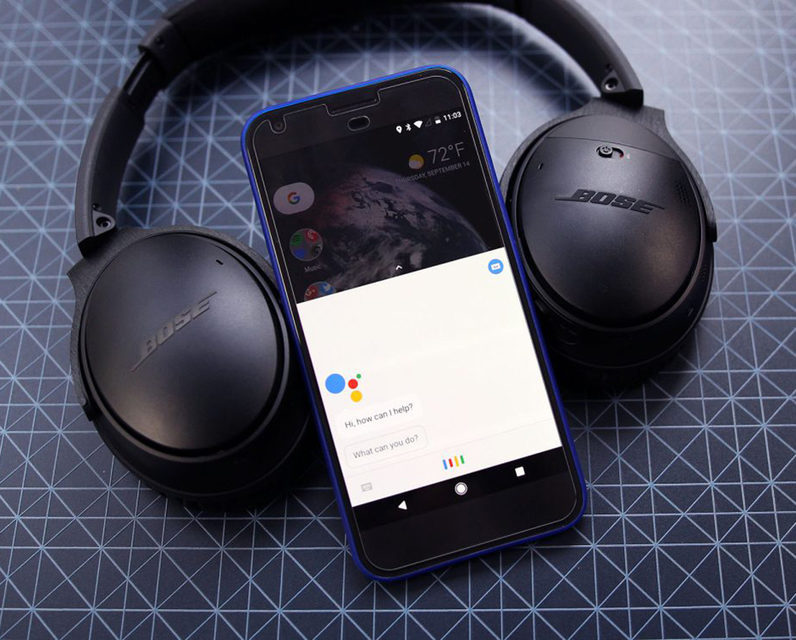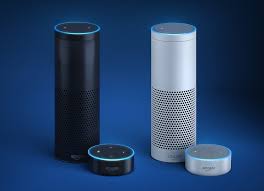The rejection of the headphone jack can be explained by the presence of a different goal in the long term.

Original material
Google has announced the Pixel 2 and Pixel 2 XL. Both devices lack a headphone jack. This caused a wave of conflicting reviews. Last year's Google mockery of a similar move from the side Apple added fuel to the fire.
These companies are neither the first nor the last to abandon the 3.5 mm jack.
The official explanations for this trend boil down to the following theses:
- Frees up space inside the device for new processors and larger batteries
- Release of thin devices
- The future is wireless, it's time to cut the wire
All this is good, but if these measures are aimed directly at getting rid of a bulky component, then the following steps are meaningless:
- Apple announced W1 – Bluetooth – a processor that makes it easy to pair with AirPods and Beats wireless headphones, which means a new level of seamless integration with iPhone.
- Google Pixel Buds have added support for the Google Assistant voice assistant, which works only on Android – devices, and the simultaneous translation function only for Pixel devices. Thus, an improved user experience is available to Pixel Buds owners.
Why limit users to your own ecosystem when you're just getting rid of old technology? The obvious explanation is that companies are trying to make more money from users by promoting their own hardware. Experts fear that users will end up trapped in a closed ecosystem, and the headphone market for audiophiles will disappear. Many say Google and Apple ditched the headphone jack prematurely and are trying to squeeze an additional $ 160 from consumers for branded headphones. This can really be explained by the presence of a different goal in the long term.
The irreversible evolution of Moore's law
A well-known technological law states that the number of transistors placed on an integrated circuit chip is periodically doubled. The result is smaller processors with more functionality.

The Apple A11 Bionic processor breaks records in mobile benchmarks, offering in some scenarios levels of performance comparable to larger notebook processors. Since the heyday of computing, computers have steadily shrunk in size – from huge mainframes to desktops, laptops, and mobile phones. Since Intel confirms the relevance of Moore's Law for the foreseeable future, we can expect further reduction in the size of processors and device form factor. The paradigm of the user interface in our main devices in the 21st century has already undergone a change from keyboard and mouse in PCs to touchscreen in mobile devices. A new paradigm is just around the corner, and like the previous one, it will improve the user experience, make communication with the device personalized and simple.
Machine learning on device
Both Apple and Google recently announced a breakthrough in machine learning using a co-processor based on a single device. Apple introduced a neural engine in the A11 Bionic processor, responsible for the new Face ID technology and animated emoticons. In parallel, Google announced a music recognition option for the Pixel 2, which uses a directory on the device itself to trigger an algorithm to match and identify surrounding music without having to query the 'cloud'. Also on the market is the Google Clips camera, which uses machine learning to 'figure out' what to click and when. Some of these applications may seem mundane, but the potential is what matters.

Siri and Google Assistant use voice recognition to understand and interpret speech addressed to them. Voice recognition is essentially akin to face recognition or music recognition. Google Home is already capable of autonomously identifying multiple users using IO on the device. At first glance, it seems like a smart move to use the self-developed and built-in device infrastructure of the IO for the operation of 'smart', advanced and independent voice assistants.
Moore's Law + MO on device = 'She'
Spike Jonze's film She foreshadows a future in which Scarlett Johansson's intelligent and witty personal assistants work in each ear. The scenario is realistic, such a user interface is justified. There is nothing more natural and simpler than just voicing the request, which the helper will understand and process.

The combination of smaller processors and IO on-device will pave the way for a revolutionary new paradigm for the user interface: small processors can run in devices that can fit in or behind the ear. Voice recognition, which is responsible for independent of the signal strength of the mobile network or the presence of Wi-Fi MO on the device, will give the user experience a new level of personalization.
Mobile apps are much simpler than PC software and have far outstripped command line interfaces from the early days of the PC, but still require configuration and installation to work with. Our phones are in our pockets all the time, but using gadgets still involves physical interaction with them.
The voice-controlled user interface eliminates the last hurdle and makes the system even more accessible. This is the future, primarily because it carries a sound message.
Future isolation
The ultimate goal is to create a closed ecosystem in which headphones will gain more independence in the coming years, and perhaps become the dominant device later. Moving users away from third-party solutions into the ecosystem of headphones promoted by both companies gives manufacturers the space to slowly transition to the expected paradigm of voice control of the user interface.

The alternative for both companies is considered the path that Microsoft took in the mobile era: to retain a dominant position in the PC paradigm, which is becoming less and less important for most users. Microsoft even developed a functionally rich and visually pleasing mobile OS that no longer mattered. Apple used the advantage of superiority in some markets, Android – in others, Microsoft did not catch up with competitors. There are many lessons to be learned from observing the challenges of a major player in the PC era, but the most important one is that when support for a new technology is available, the transition is inevitable. Better to be in control than to be left out.
Forcing users to get used to the idea of buying expensive proprietary headphones and adding functionality with each new announcement is much easier than trying to evolve technology in a vacuum and persuading users to abandon a familiar paradigm. This approach will also reduce the risk of giving a potential new player 'room' to develop, although one company has already made a strong claim to win.

Much of the richest resources Amazon are devoted to the development of the Echo ecosystem, which offers devices for several market segments. Having failed with Fire mobile gadgets, Amazon has established itself in the quest for the next breakthrough. Apple and Google remember the past and are aware of the threat.
The rejection of the headphone jack was perceived by users as a serious loss: they will have to rely on either a different set of adapters, or an unusual Bluetooth. Users did not hesitate to voice their discontent, and companies in the future will lose some of the mass users who prefer to buy cheaper devices with a 3.5 mm jack, as well as audiophiles who will buy LG V30 for listening through expensive headphones. Apple and Google are able to make such sacrifices, preparations are underway for a new era in PC computing and beyond.
Author – Gautam Mainkar
An original point of view that has a right to exist. The only thing that confuses is the coincidence of circumstances, thanks to which such an excuse was successfully and timely found to abandon the 3.5 mm jack in favor of more relevant innovations.
If machine learning can actually bring us even a little closer to the scenario of communicating with the OS described in the mentioned film, then something can be sacrificed for this, even if such a familiar element becomes this victim.
